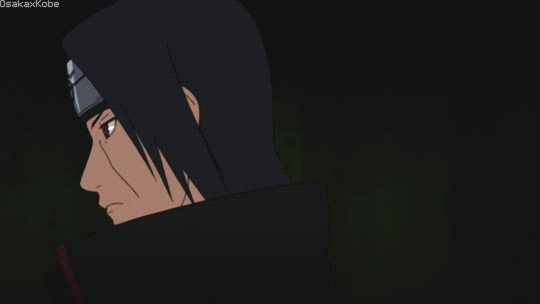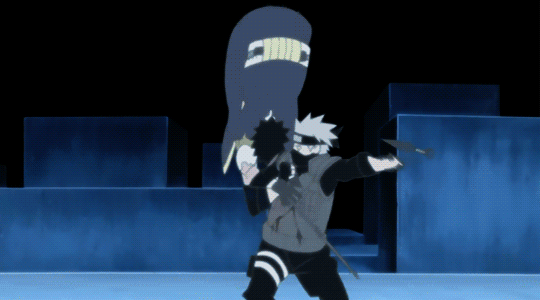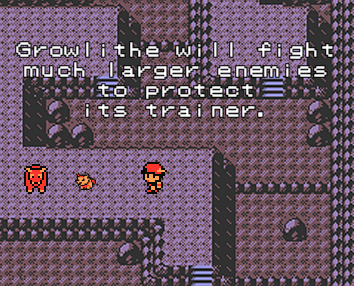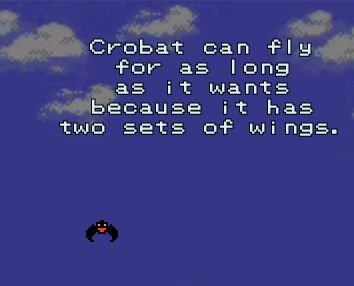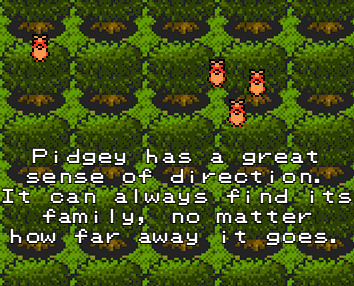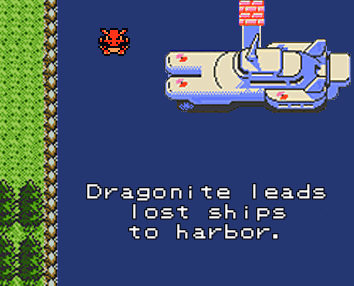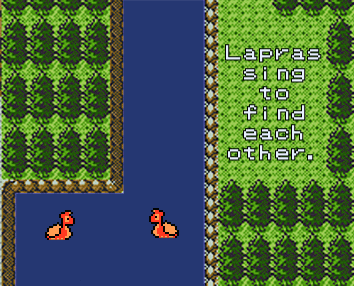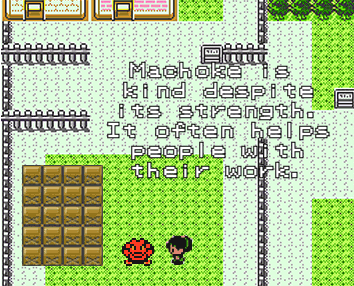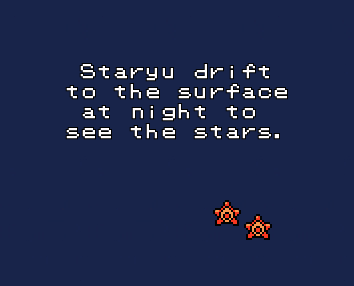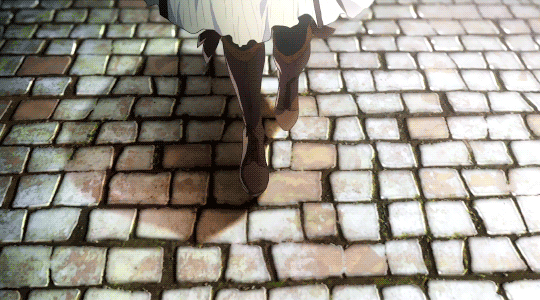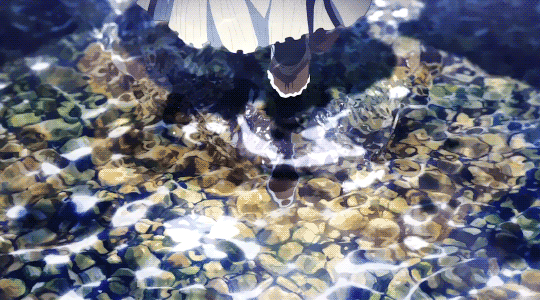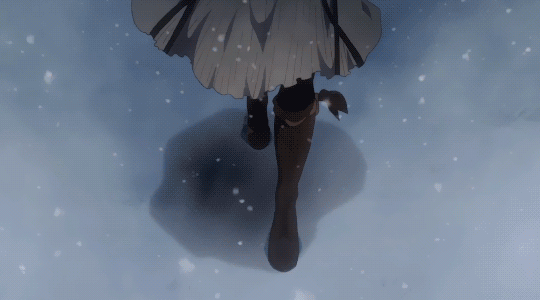Don't wanna be here? Send us removal request.
Text
Jurassic World: Fallen Kingdom review - That ride at the fun fair everyone hyped but you go and it’s just okay
As movie franchises go, I have two that I will always defend, good or bad, entertaining or pointless: the marvel cinematic universe and the world of the fast and furious.
Why I love these is probably down to a melding of two things, nostalgia and escapism. Catching both in my teens, they probably encapsulated some sort of anarchy and “you can so it” grit I needed as someone who felt they had no control over anything. You see the Rock break free of an arm cast just by flexing his bicep how do you not think “you can do it if you just try hard enough” (this scene was from the seventh FF so I was already into my twenties but fresh out of uni right back home, I might as well have nee 15 watching it).
Coming into a new franchise late on can either make you want to lap up a back catalogue and become a super fan or leave a stanky taste in your mouth, making you question why the hell everyone loves this thing. Jurassic World: Fallen Kingdom managed to did neither
Directed by J. A Bayona the fifth instalment of the Jurassic world franchise had interesting ideas, with amazing set pieces, a few punchy one-liners and some cool-ass looking dinosaurs but the overall film struggles to match the entire piece with the sum of its parts. This really makes for a jaggedy funfair ride - you like the idea of it and there are some fun bits but ultimately you could have done without it.
We’re overfed exposition and callbacks to previous films in plot and it completely takes you out of the world to remind you that you’re watching a franchise that wants you to keep coming back. Something glorious and out of this world will happen but once it's finished you’re hit with a metaphorical Hollywood type saying “That was great but we need this to happen too. Let’s put you guys over there so we can make that happen”. Nothing is left for you to revel in and you are spoon fed a lot. Otherwise literal big red buttons you push to move the plot forward appear in the film and before you know it you’re bored.
Bringing in auteur like Bayona and calling back some of the original franchise makers is a blueprint a lot of big-budget productions are doing. It’s a proven precedent that works but only if you trust in your investments. Fallen Kingdom felt like compromises were made and it leads to poor dialogue and mechanical plot.
Granted going a little left field with nuanced directors can take a film into unusual places or even completely different genres but previous franchises have brought in new people and ideas and have benefited incredibly handing the reins over. Jurassic world can hardly argue it’s not trying to do the same, why not try and emulate the experiment completely instead of in places.
0 notes
Text
Jeune Femme review - Frances Ha in colour
In her directorial debut, Leonor Serraille brings us a pensive but fun film about a woman in her early 30s.
We follow Paula Simonia (Laetitia Dosch) return to Paris after travelling and try and lay the foundations for a prosperous life as an adult. This proves difficult when her mum and dad aren’t talking to her, her ex keeps playing games and no one wants to give her a job.
The film is shot in a way that makes it feel as if Paula is fighting Paris. A lot of picturesque wides, a lot of reflective single shots - taking on a big city all by herself is tough but it doesn't stop her. The standout performance from Dosch is something to be noted, she does everything in her power to make us empathise with everything that occurs in her character’s life - even regular commutes to work can be riddled with nuance. Conflict does arise and push the movie forward but it does little to pressure or change our main character with her can-do attitude.
This makes for more of a character study film where nothing really happens but that isn’t to say it is not engaging - it’s like if Frances Ha was in colour because the stakes were higher, as a viewer you’d need the colour to take you into the vivid and slightly more life-threatening experience rather than the surreal and trivial. There isn’t much between the two though, it’s probably Jeune Femme being in another language that adds to the despair.
Our main character is headstrong but adaptable, falling apart but loving every minute of it. If you’re a young person and that doesn’t sound familiar, I truly envy you. Seek out the film if you too need some self-assessment or wish you could wander the streets of Paris carefree.
1 note
·
View note
Text
A Prayer Before Dawn review - *avoid using a boxing superlative in the summary; it’s lazy and you’ll more than likely use some in the main body, probably in the first sentence*
Up against near legendary heavyweights this summer - The Incredibles II, Mama Mia - A Prayer Before Dawn is at danger of being left behind by the mainstream before it even gets a chance in the spotlight (the title alone doesn’t help things). However Prayer, shot in Thailand and directed by Jean-Stephane Sauvaire does something a lot of mainstream projects - let alone boxing films similar to this can’t do: give you empathy and offer a truly immersive experience. It’s a must-see.
From the opening shots, we follow Joe Cole’s Billy Moore try and establish himself in a world he, very clearly, doesn’t call home. Based on a real-life Billy Moore’s experience (in a book titled: A Prayer Before Dawn) Billy’s only useful commodities are his tenacity, his talent for boxing and his ability to read a room quickly. With the English language rarely used in the film, it quickly becomes clear that the latter will be the most useful and it’s what makes the film more than just a nicely done boxing film.
When they do appear in the film, boxing scenes and fights are done at extremely tight camera angles that move in reaction to Billy. Joe Cole’s stellar acting allows you to truly believe in the peril Billy found himself in and his desperation to survive.
The exact same can be said for the non-boxing scenes which I would strongly argue are even better than the fights. Sauvaire constructs his film in such a delicate manner that the fight scenes would mean nothing without the nuance and tension the more quiet scenes bring - a bit of a juxtaposition, considering most of the thing is set in a prison and consists mostly of sex, drugs and violence.
It being a genre film, it can’t escape typical tropes - the wax on wax off philosophy etc - but it did well to construct a few in some novel ways. The “final battle” pays off far greater than expected as you simply can’t predict the fight and its aftermath happening. If you are a bit of a genre pro, even if you do find it predictable you’ll enjoy revisiting the calling cards.
A film like Prayer brings to mind a certain clientele - slim fit shirt wearing city boys who kick-box once a month and believe they can take on the world (and they did come in their droves in my screening) - but the film is way more than just a box-ticking genre film. The action you see is earned and the payoff is remarkable. There isn’t really much point or moral to the film but it doesn’t need one: Prayer is a film you watch to immerse yourself in a world you’ll more than likely never experience.
0 notes
Text
Leave Wes Anderson out of your woke conversations
With a smorgasbord of (very well-crafted) politically-rich films in the mainstream right now it can be easy to assume that every “masterpiece” that comes across our screens was made to appease our socially curious minds.
With the weighty addition of the #metoo movement, you could argue that it’s the duty of the filmmaker to give us a set of strong morals we can berate everyone we meet with. Because of this expectation, movies are under an unforgiving lens right now and Wes Anderson’s latest piece, Isle of Dogs, is no exception.
In his ninth feature and his second stop-motion film, Isle of Dogs follows an alpha pack of dogs try and survive a Japanese doggy dystopia, purpose-built for them by an oppressive Kobayashi regime. Their goals are recalibrated slightly from survival to rescue when a young boy, Atari, comes to their home, Trash Island, to look for his lost dog. The team lead by their new master undergoes a Great Escape-style caper.
Pretty standard Wes Anderson film right? The critics would agree so too. Only a lot of people are unhappy, even furious, with how the director has handled Japanese culture.
There are no two ways about it, this film is heavily appropriated. It cements very old, westernised ideas about Japan: playing heavily on the mispronunciation of words, Samurai ideas and culture bookending the film, skirmishes and explosions in atomic bomb-style mushroom clouds, sushi, the Yakuza are the bad guys… the list goes on.
Behind the camera, there were many native Japanese hands involved, as Kunichi Nomura namely helped develop the story and voiced Mayor Kobayashi, the authoritarian ruler of the make-believe Megasaki City. In the hands of a lesser filmmaker, this cultural tourism could have turned out to be actual racism. Critics and people like myself would argue Anderson should have known better, even if the seeds were sown for this film in 2007, well before this ‘woke epidemic’.
The insensitivity to race issues is even made worse with - one of my favourite problems - white saviour complex, with added sprinkles of misogyny. Although our hero this time is Tracy Walker (voiced by Greta Gerwig) a young exchange student from America, who just happens to be in the area to help overthrow an oppressive regime, our diversion from the unexpected is steered right back onto the heteronormative track with Tracy winding up with a crush on our male protagonist, Atari (yes like the console by the way). In case that wasn’t enough to embed into children the idea that women can’t do anything without a man by their side, the relationships between the doggos of the film follow a similar formula.
On top of this, the ensemble cast comes together to form a kind of whitewashing avengers, who have, interestingly, all been criticised for starring in films that are insensitive to aspects of East and South Asian culture. Tilda Swinton in Doctor Strange, Scarlett Johansson in Ghost in a Shell and Lost in Translation with Bill Murray, and Fisher Stevens in Short Circuit.
To simplify things, let’s umbrella all the problems with this film and concluded that Anderson made Isle of Dogs for a white, working to middle class, straight audience, who probably haven’t been to Japan or know much about it outside of what they learned from school or popular culture - viewing the film with a “white gaze”. A rather outlandish -some would argue accurate- claim to make against a director who has done nothing the audience, now more socially conscious, deem too unjust, right? To only talk about Isle of Dogs this way is not fair on Wes Anderson.
“This is his love letter to Japan though” you might say. “How will we understand different cultures if we don’t even get to show them on screen and talk about them? Besides it’s not even real, none of Anderson’s films really adhere to reality”, “P.C. gone mad” blah blah. Wes even said the story “could happen anywhere” and he and his team (Japanese natives included) made it because of “a shared love of Japanese cinema.” Herein lies the problem: Anderson’s use of the white gaze has gone unchecked for a long time. As a white filmmaker, he has benefited from structural racism and current gender dynamics well before Isle of Dogs.
From Moonrise Kingdom to Bottle Rocket to the marvellous Grand Budapest Hotel, we follow the same white characters play out the same heist-like escapades, playing off of trends and stereotypes the white gaze has seen and consolidated time and time again. Under all the pretty pastels and fully utilised thirds, there are a lot of people (filmmakers like Anderson and audiences in general) patting themselves on the back for believing they have interpreted and appreciated a culture - say Japanese culture - extensively and not in bad taste. We’ve known for a while that a lot of Hollywood films only highlight how the majority of Westerners view the world around them. Some people are only now coming to realise this is not always the right thing to do, and even fewer are willing to elicit change. I fear Anderson falls into the latter category.
The fact that Anderson can now pretty much hand-select a cast for a film means he has access to the best Hollywood has to offer, who tend to be stars we adore for their humanity as well as their ability. I wholeheartedly believe no one in the making of this film is racist or meant wrong by anything they did but it can’t be ignored that with the release of Isle of Dogs, it’s become clear that Anderson doesn’t want to use his position to incite any meaningful social development in the film industry. He doesn’t have to or have to want to, however, it is disappointing to know that someone we consider so effective at storytelling is choosing to tune out the calls for change. We’ll have to look for our innovative films elsewhere.
As Reni Eddo-Lodge might put it: Wes Anderson is one white person you shouldn’t talk to about race or anything else woke for that matter.
2 notes
·
View notes
Text
Long term injury recovery guide
Injuries aren’t much of a big deal most of the time: you fall down or bump into something, it hurts for a little bit and before you know it you feel better. A typical “bad” injury lasts 2-3 weeks, 4-6 if it’s serious and 8-12 if you’re really unlucky. Sometimes, if you’re really, really unlucky, you’ll do something that keeps you immobile for far longer than expected. If you have this kind of bad karma like me, you’ll suffer from something that seemed minor at first but then be injured for more than a year (almost two in fact). Unlike professional athletes, most people don’t have a support team completely dedicated to helping them recover - with constant doctor’s check-ups, scans and physio appointments. There’s no nutrition plan to keep you healthy and crucially, there’s no mental support. Whether you’re sporty or not, long term injuries can be a real hindrance to your everyday life. That state of almost never-ending helplessness can swallow you whole and turn you into an incredibly jaundiced person. Know that there is an end to this feeling and eventually you will recover from your injury. It probably took a long time to get to the fitness level you were and it’s going to take a long time to get better. More importantly you don’t want this kind of thing to happen again. It’s not your fault you are impatient and demanding, you are just a product of today's society - being able to have anything you want in seconds, if not, 3-5 business days. UK medicine/treatment is very formulaic and sometimes your personal numbers don’t fit into its very general equation. You will get better, you just need to look at the problem from a “what works for me” vantage point. Hopefully my 6 points will help keep you positive on the very long road of recovery. They’re also applicable to typical injuries as well. Guide to long term injury: 1. Don’t B**** 2. Rest, Ice, Heat and repeat 3. Be careful about physio 4. Buy equipment to help recovery 5. Don’t jump right back into things 6. Stay mentally healthy 1. Don’t B****. No one cares (really)- Try not to bring it up with everyone you know/meet. There’s a bittersweetness to injuries, especially the big ones. For the first couple of days it’s paradise because family and friends are at your beck and call, doing all the heavy lifting - laundry, food, the lot! The power you have over your subjects is rivaled only by North Korea’s supreme leader Kim Jong-un. You will be constantly asked about your cast/bandage and you can turn it into an epic origins story, where it's a wonder you’re still alive, or just play it nonchalantly. What you have to remember is, this won't last. When talking about your injury, get to the point, what hurts and why. You’ll find that even you hate yourself for repeating the story over and over again. Even your doctor/physio is only interested in a little over the bare minimum. They have plenty more patients to see so try not to waste their time. Keep to the facts so it doesn’t sound like you’re trying to get through to the judges’ houses round on The X-factor with your over embellished sob story. When talking to your medical professional you only add more detail so they can organise the best prognosis for you- how long you've been hurt for and what currently exacerbates the pain is usually enough. Your friends and family are far less likely to want to listen to you drone on after the first couple of days and the favours/errands will stop if you get caught underplaying your capabilities - it’s been the staple midseason sitcom episode for a long time. So everyone doesn’t turn on you, try your best to be independent. Vent to the internet - writing articles like this - or find relatable Youtube videos or Reddit threads to watch/read.If you can move a little by yourself, get everything you need for the day as soon as you get up - water, medicine, snacks, hot water bottle etc. Chose you resting place and make it your rehabilitation fort. Rota your support (literally write one down for everyone to see or keep a mental one for yourself) so you avoid the eye rolls and huge sighs. Positivity breeds positivity, by showing you’re somewhat willing or capable to carry on like nothing has happened, people will be more willing to help you when they see this. They may even want your injury’s origins story again. 2. Rest, Ice, Heat and repeat Here I’m just repeating what everyone else has told you already but it should be your dogma, your religion until you feel 100% again. Keep the injured area elevated and treat with ice and heat accordingly. These processes regulate circulation to the injured area and speed up the natural healing process - a physiology hack if you will. Neoprene or tubular bandages may or may not help but they look pretty badass. The take home message is rest and keep resting for as long as you can. When you become more functional but still feel niggles, you still have to prioritise full recovery. This becomes a lot more difficult when people can't see a physical indicator of your injury but you have to remember - they’re not in pain, you are. You don’t have to go to that social event. You don't have to do that thing your boss/ parents/ friends told you to (try not to get fired please, just find a way around what they want, or get help). You’re going to have up days and down days on the road to recovery and sometimes your body just isn't going to be with it, so listen to it, please. No doubt it’s boring af just staying at home “resting” but try to exercise your brain with a new language or something else intellectual. Start listening to podcasts, order a new game or get into all that TV everyone is talking about. Group chats about what happened after a night out are usually juicier than the event themselves. Live vicariously through them. Sub point- Eat healthy! It’s very easy to balloon because of the lack of physical activity. Try and change the way you eat, with smaller portions at big meals and making your snacks fruits and vegetables. Popcorn is a good “in between good and bad food” to have if you can’t stomach all the greens. So you don’t have to move preparing your own meals, get your family or whoever you live with to make extra portions of their food. If they don’t eat as… consciously as you, again, you could just have smaller portions of what they prepare. Choosing the healthier options though gives you a nutrient boost, certain to speed up recovery. Spinach, for example, enriches your blood with folate and more than ten other useful nutrients that can help your recovery. Having nutrient rich blood will help detoxify your body (making you less whiny as well) and relieve inflammation. Doing this will help you move onto physiotherapy. 3. Be careful with physio: The Physical Therapy Tightrope It is imperative that you see someone about even the smallest of niggle because there could be larger underlying problems that are nowhere near the initial pain. If it ends up being nothing then you can put your mind to rest and just carry out step 2. Sometimes however, you feel like you would be just bothering the medical professionals or you can’t find the time to go and see one so you just get on with the physio because you “know what you’re doing”. If you and your body feel competent enough, you can undergo some light stretches and range of motion exercises. There is ample help online for even the most unique of injury. I found it useful to write down or read/repeat aloud the instructions and why I had to do them. This way, nothing went over my head and I comprehensively understood every stretch or exercise. If you’re very sporty and it’s a long term injury, your new set of exercises always feel like they aren't very effective and you lose interest quickly, especially if you’re doing the exercises on your own (and you don’t have the help of that professional recovery team). For me, writing down why you’re doing the exercises and reading it aloud also reminded me of the end goal. Doing this will keep you going when it all seems pointless and they might as well cut off what's hurting. Keeping a calendar to track the process is also a helpful option. Writing down variations of the exercise/stretch is helpful too. You will probably need to increase/decrease the intensity of the physio from time to time because how your body feels will change day to day. When you're injured, pushing that little harder is never worth it. You’ll just end up at square one again and no one is gonna pass you the remote anymore. 4. Buy equipment to help recovery - Some toys to play with Recovery equipment is becoming a lot more financially viable for everyone to own and add to their physio routine. It’s not quite reached the level of a cryogenic machine in your home but what is available is very useful. Hopefully you’ve seen a physio, and they’ve given you that big rubber band that helps you ease into your exercises. On top of that, a basic DIY recovery set, in my opinion, should have: a massage stick (£5-£35), a foam roller (£12-£200), lacrosse balls (��3-£20), floss bands or support sleeves/bandages (£5-£30). With one, or all of these tools you can regulate circulation and relax tight muscles - myofascial release (love that phrase). Alternatively you can just use items around your house: a tennis ball (slightly softer than a lacrosse ball), a rolling pin (much less forgiving than a massage stick) and a towel (if your physio never gave you the giant rubber band). If you had to buy just one tool, a foam roller is the best value for money. Nothing around your home can do the same thing and it works all parts of your body. In an ideal world you would have a physiotherapist, sports masseuse and acupuncture specialist come to your house everyday to relax your muscles and joints. I feel like if that were the case, you wouldn’t be reading this. The closest thing you can equate to that kind of physical therapy service is a long foam-rolling session, several times a week. If you can afford a vibrating roller, get one! Again, you can write down how and why you use the equipment and what the end goal of using the equipment is too. When you first start rolling out, work on muscle groups around the injury as rolling directly onto the injury could increase inflammation and muscle tension, the exact opposite of what you want (I found out the hard way). There’s going to be pain but it should be manageable (kind of like the buildup of lactic acid you miss so dearly). Warming up the sore muscles and their surrounding areas with a heat pack or hot water bottle before you start can improve your results also. 5. Don’t jump right back into things Even when you're confident you're ready to get back into things, or the doctor has given you the all clear, have a week or two of transition i.e. strength and conditioning exercises. Do exercises that work on where the injury was and its surrounding areas. I’m not your doctor so you don’t have to listen to me but I have had a long list of past injuries and have a degree biomedical science so I feel this is important. One of the best ways to avoid recurring pain or injuries is to “max out” your physio plan. Add or double the bands you use and add weights to your regime. Not only will this help stop a relapse but you’ll also find other muscles and joints don’t get hurt as they try and recalibrate. Best example, when a sports team’s star player is back from an injury but the manager won’t start them for the next pivotal game. The manager has the player’s overall health in mind and knows a little more rest will be beneficial in the long run. If you continue strength and conditioning when you're healthy, you’ll find subtle things in your performance will improve. It would be a good idea to invest in some “speed bands” and add strength and conditioning into your general workout plans to prevent injuries too. 6. Stay mentally healthy. The most important The most important and hardest to do. No other way about it, long term injuries suck, especially when you were meant to be better a long time ago. You have no one to sue because you injured yourself, your sympathy card was revoked a long time ago and you’ve put on some serious weight because you’ve been “resting” forever. Every time you try to do any sort of physio or recovery exercise it just hurts more and you’ve spent a lot of time and money seeing medical professionals with little to no improvement (and you’re broke). Remember there’s always time to get back into things. We are constantly moving in today’s world, so appreciate the slowdown in time when you physically can’t do anything. Acknowledge what you do have and think about those who don’t have what you do. Thinking so existentially isn’t needed but it really helps. From a more selfish point of view, find some informative Youtube videos, listen to the music you used to work out to or watch that thing that gets you pumped - that induced endorphin and adrenaline boost is pretty cool and you can keep telling yourself you’re going to get better. Other things that helped me were acupuncture and yoga and writing all my plans down - including putting on ice packs, heat packs and rolling. This helped me stick to a personal formula but you can essentially pick and choose from anything on the list. They are all supplements to keeping you mentally strong. Good luck.
0 notes
Link
0 notes
Photo






Creative Examples Of How To Fix Broken Stuff
150K notes
·
View notes
Photo
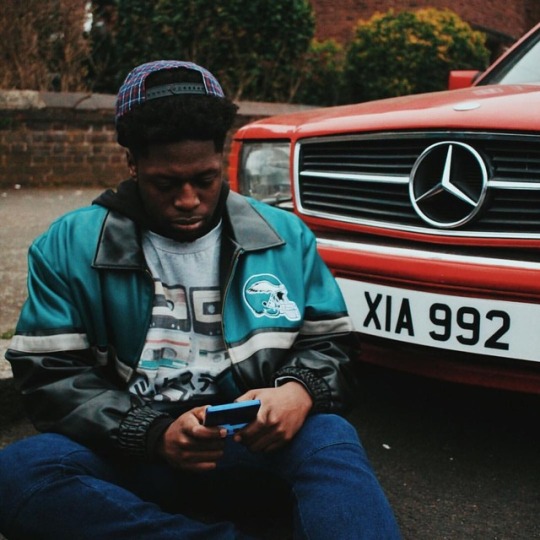
When you just have to play your sp
4 notes
·
View notes
